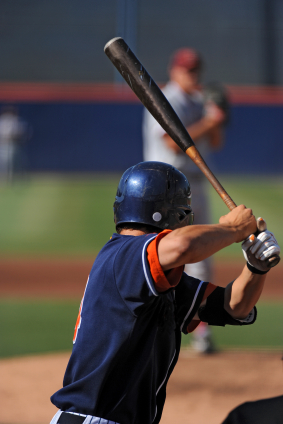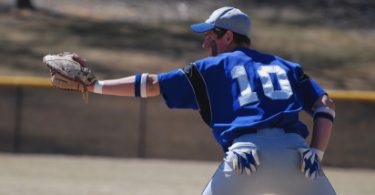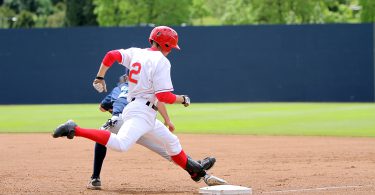The Situation:
There is no one on base, no outs, and it’s the start of the 8th inning. It’s the third at bat for the four-hitter and he has pulled the ball for a hit both of his previous at bats. The infield and outfield have been shifting to the pull side to play against the hitter’s tendencies.
The Play:
The coach comes out of the dugout and repositions the defense into a more extreme shift with the third baseman at the natural shortstop position and three defenders on the other side of second base. Meanwhile, the pitcher is focused on the hitter who already has two hits off of him. The pitcher gets his sign, starts his windup, and delivers a fastball outside. The hitter pulls off the ball but makes contact, hitting a weak popup in front of third base. The catcher does not get a good read on the ball and it takes him a second to locate where it’s going. By the time he realizes where it is, he hardly has time to say anything. Not fully realizing the impact of the shift, the pitcher does not break to catch the ball either.
The Outcome:
With the third basemen shifted too far from third base and the pitcher not breaking for the ball, the ball drops in untouched and stays fair, leading to the hitter’s third hit of the day and a base runner to start the inning.
What Went Wrong:
The hitter is just having a really good day at the plate and it seems like everything is going his way. Some might consider the batter’s 3rd hit lucky, but there are a couple things that could’ve happened to prevent it. It comes down to the little details when playing the game.
Defensive shifts are starting to become much more prevalent in the game of baseball. We see very extreme defensive shifts in the MLB and it all comes down to playing the percentages on where a hitter is known for hitting the ball. This is starting to trickle into the college game, where we can expect to see more and more detailed shifts. The first thing the pitcher should have done before toeing the rubber is to see where his defense is playing. He needs to understand where his defense is playing so that he can decide not only how he wants to pitch the hitter, but also how he needs to defend his position. If a pitcher sees that his defense is playing an extreme pull shift, then his job is to pitch that hitter into hitting the ball into that defensive positioning. He must execute pitches for the defensive plan to work.
Lastly, not only pitchers, but all position players should never assume that someone else is going to get the ball. Even pitchers who historically have been told to get out of the way of other defenders now have an expanded role on defense and need to understand shift responsibilities. Even as a pitcher, when you see the ball go up, go and get it until you get called off. Always stay aware of the situation and think the game.






